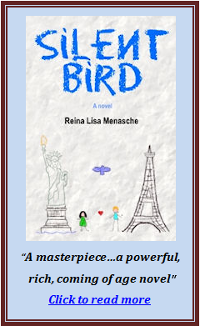 East County News Service
East County News Service
October 15, 2019 (San Diego, CA) -- For the past two years the Mountain Empire Unified School District’s Teachers and Native students received a gift of 500 full-color books including the photography and research of historical Kumeyaay rock art. Much of the rock art located along the U.S./Mexico border is within the school district’s boundaries.
The gift was made possible from a grant obtained by the Imperial Valley Desert Museum, located in Ocotillo, CA. Don Liponi, the book’s author, seeks to preserve the rock art for this and future generations of Kumeyaay people. The following text is a reflection about the book from the author:
“Nearly 10 years ago a highly impassioned group of desert hikers rediscovered a series of pictograph panels in a canyon that was unknown to the scientific community. These paintings were probably executed by the Kumeyaay Shaman or immediate ancestors. Using a new technology to make visible the faint hints of pigment an array of dancing men, a sunburst, a woven basket, a centipede and exotic shapes whose meaning is unknown to the outside community. This canyon also contained hundreds of Morteros, grinding slicks and other evidence of food preparation. All through the canyon was abundant evidence of water scouring the granite rock. This story seemed to convey that we were looking at a desert community of food, water, ceremony and spiritual communication by the Shaman. Our little group continued making such discoveries of wonderment all over the Anza-Borrego Desert and beyond. Over several years we rediscovered hundreds of paintings in the wilderness close to other village sites and in isolated areas. As our discoveries grew we began interacting with the Kumeyaay, professional archaeologists and other avocationalists. Out of this collaboration of nearly 50 people we published our first book, La Rumorosa Rock Art Along the Border Volume 1.

Liponi, Don. La Rumorosa Rock Art Along the Border: A Survey and Related Artwork In Southern California, Colorado River Corridor, Western Arizona and Baja California Volumes 1 & 2, Desert Trails Publishing, 2017 & 2019.
In the subsequent book tour in support of Volume 1, everywhere I went people were captivated by the images of the Kumeyaay painters more than anything I could say about them. People were very interested in knowing more about the two Kumeyaay friends I interviewed in the first book. I gave talks to students in San Diego who seemed to know a good deal about Kumeyaay culture and heritage. It left me hopeful for the future. Elsa Sevilla featured our book on her KPBS program, Historic Places, along with Kumeyaay speakers who talk about these paintings. The books were distributed to the Kumeyaay students and teachers of the Mountain Empire Unified School District to share in these rediscovered paintings. The School District sits on historic Kumeyaay lands where much rock art is located.
There is much more to say, but interest in this “artwork” and the possible reasons why it was painted seem to be nearly universal. The first volume of La Rumorosa Rock Art Along the Border sold out of all 1500 copies.
Our group moved forward with even further discoveries which we assembled into a second book featuring more than 200 half, full and double page images. This time, we accompanied it with several local archaeologists that had worked to put together a Kumeyaay related history stretching back 10,000 years or even further. We wanted people to understand, from the science, what was going on with these First People to San Diego while the paintings were being created. We hope that we have responded to the nearly insatiable interest to learn more about these people and how they survived and thrived for nearly 10 millennia in our community. To be specific, consider, you were dropped in the desert with no technology, food, water, clothing. How long would you survive? What if you had no explanation of how the world came to be or what your existence meant relative to the animals in your world? What would you do? How would you create meaning to your life? If you can just imagine for a moment that you were not born into a highly structured world, both materially and spiritually, how would you survive? We hope our second book answers some of these questions. The Kumeyaay people answered these questions and lived in relative harmony with all adversity for a very long time. Their Shaman are due a tremendous amount of respect for addressing the needs of their community”.
The Mountain Empire Unified School District currently serves students from the three Kumeyaay Nations of Campo, La Posta, and Manzanita.
If you are interested in lending your voice to support our Native Learners, please contact Bob Bordelon at 619-473-9022, ext. 1137 or e-mail Bob.Bordelon@meusd.k12.ca.us for a schedule of our District’s American Indian Education Advisory Committee.












Recent comments